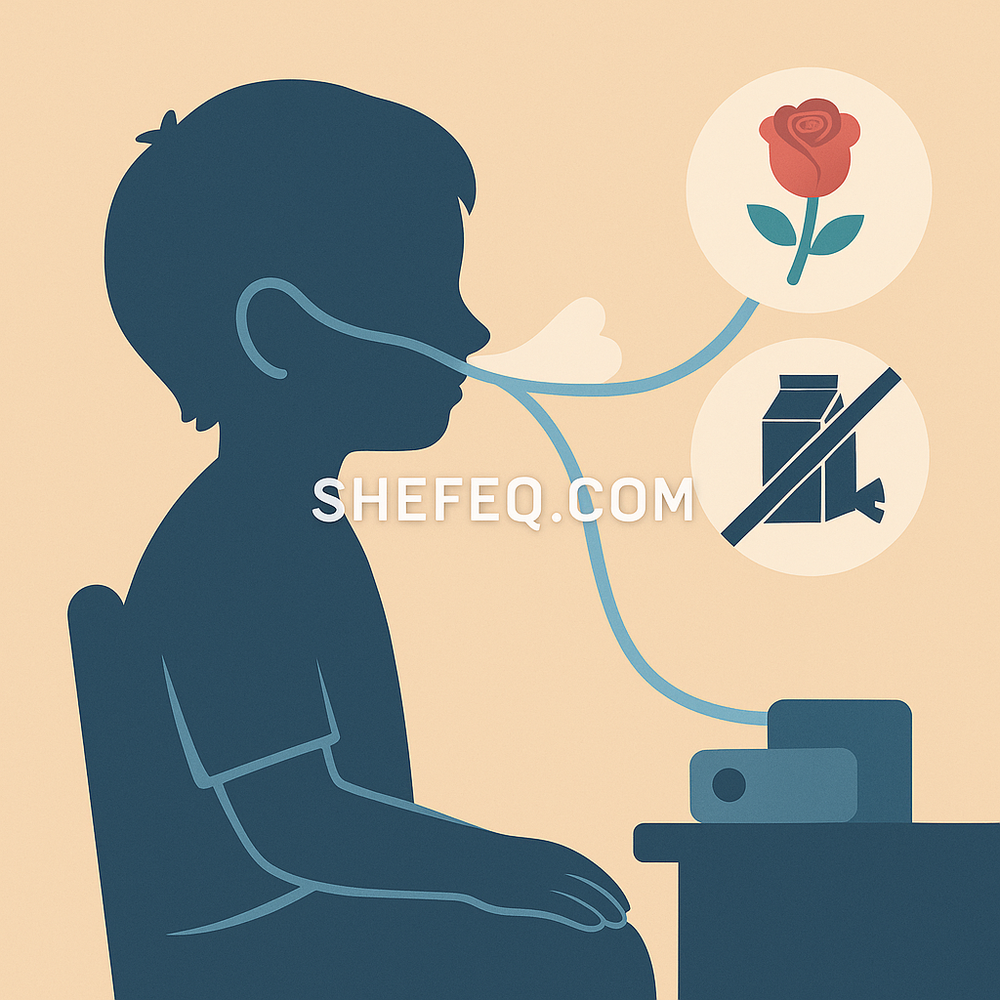Brief summary:
A new study used a short—approximately 10-minute—odor test to try to identify a distinctive sniffing pattern that may be characteristic of Autism Spectrum Disorder (ASD) in children. While the results are promising, this is not yet a diagnostic tool, and larger studies are needed.
What did the study show?
Typically developing children breathe more deeply when they smell pleasant odors and more shallowly with unpleasant ones. In children with autism, the depth of sniffing did not change based on whether the odor was pleasant or unpleasant—i.e., sniffing “modulation” was weak.
These findings were published on July 2 in Current Biology.
Methods and procedure
-
Odors were delivered to the children’s noses through thin tubes.
-
A device automatically measured the depth and duration of sniffing—no verbal instructions were given.
-
Sample: 18 children with autism and 18 typically developing children (all about 7 years old).
-
Over 10 minutes, each child received 20 odor pulses: shampoo, rose (pleasant), sour milk, and rotten fish (unpleasant).
-
Result: Typically developing children sniffed pleasant odors more deeply and unpleasant odors more shallowly; children with autism inhaled a similar volume of air in both cases.
Why might this matter?
-
The test is fast, doesn’t require verbal responses, and measures a physiological reaction rather than overt behavior.
-
It could potentially serve as a screening tool (for initial detection).
Important limitations
-
Small sample size: results cannot be broadly generalized.
-
Narrow age range (around 7 years): needs confirmation in other ages.
-
Baseline olfactory function was not assessed in all participants—some critics highlight this.
-
Not sufficient for diagnosis: at this stage it is only a proof of concept.
Expert commentary
-
Neil Martin (Regent’s University London) calls the approach a “good idea,” but says it’s too early to draw conclusions.
-
Johannes Frasnelli (Université du Québec à Trois-Rivières) notes that clinical application is still far off, though the data are interesting.
-
Study co-author Liron Rozenkrantz (Weizmann Institute) emphasizes that earlier work relied on verbal instructions that might be unclear for children with autism, hence the choice of automatic measurements.
Conclusion
Measuring odor-driven sniffing responses shows potential for early identification of autism. However, this method cannot be used to make a diagnosis on its own. Larger, methodologically robust studies covering diverse age groups are needed.
Note: This article is for informational purposes only. If you suspect autism in a child, please consult a pediatrician or a child mental-health specialist.

